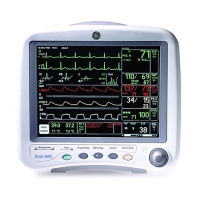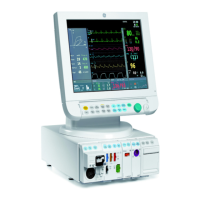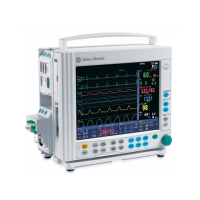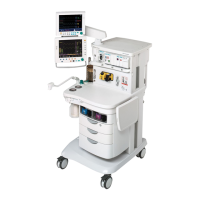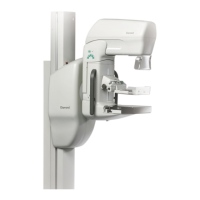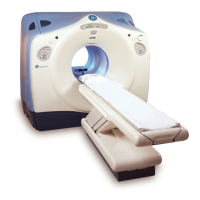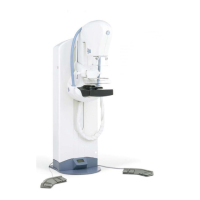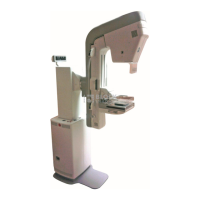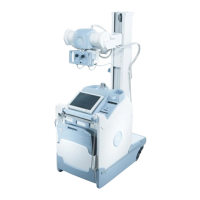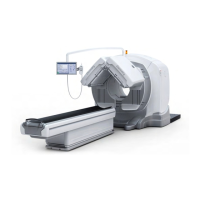11-18 Dash 2500 Patient Monitor 2042480-001 C
NIBP: Principles of SuperSTAT Noninvasive Blood Pressure Determination
Principles of SuperSTAT Noninvasive Blood Pressure
Determination
The oscillometric method of determining NIBP is accomplished by a sensitive
transducer which measures cuff pressure and pressure oscillations within the
cuff. For the first determination taken on a patient, the algorithm stores the
pattern of the patient's oscillation size as a function of the pressure steps. For
subsequent manual (determined as such when the previous determination is
less than 16 minutes old), auto or stat determinations taken of the same patient,
as few as four pressure steps may be necessary to complete the determination
process. When employing fewer pressure steps, the system uses the stored
information from the previous blood pressure determination to decide the best
pressure steps to take. The algorithm measures the consistency of pulse size to
tell if the oscillations taken at a step are good and if more steps are needed.
The first determination settles at an initial target pressure of 135 mmHg (adult
mode) and 100 mmHg (neonate mode), depending on initial target pressure
preset. To allow for rapid settling of cuff pressure, the monitor will momentarily
inflate to a higher pressure then immediately deflate to the target pressure.
After inflating the cuff, the NIBP parameter begins to deflate. The oscillations
versus cuff pressure are measured to determine the mean pressure and
calculate the systolic and diastolic pressures.
During an NIBP determination, the parameter deflates the cuff one step each
time it detects two pulsations of relatively equal amplitude. The time between
deflation steps depends on the frequency of these matched pulses (pulse rate of
the patient). However, if the monitor is unable to find any pulse within several
seconds, it will deflate to the next step. The process of finding two matched
pulses at each step provides artifact rejection due to patient movement and
greatly enhances the accuracy of the monitor. The figure shows a full
determination sequence for an adult patient. In stat mode, some steps may
require only one pulse.
Full NIBP Determination Sequence for Adult
At each step the microprocessor stores cuff pressure, the matched pulse
amplitude, and the time between successive pulses. The stepped deflation and
matched pulse detection continues until diastolic pressure is determined or total
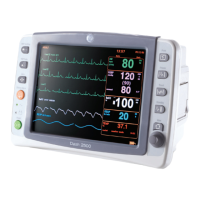
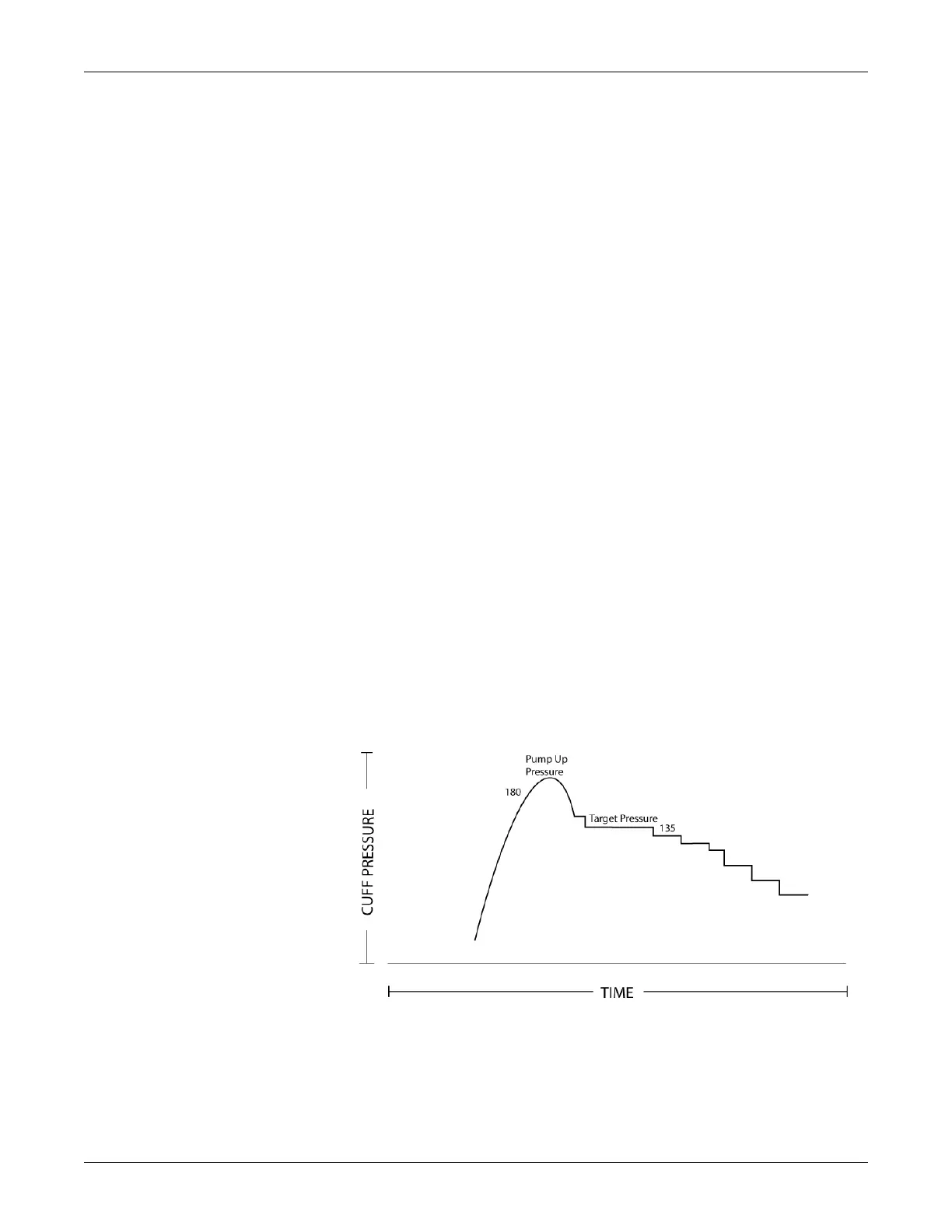